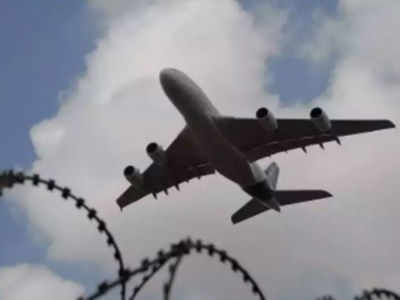- News
- Business News
- India Business News
- Track flights throughout journey: DGCA to carriers
Trending
This story is from October 24, 2018
Track flights throughout journey: DGCA to carriers
Come November 8 and Indian carriers will have to track their aircraft throughout their journey. India had decided on this move after the mysterious disappearance of Malaysia Airlines’ MH 370 on March 8, 2014, when flying from Kuala Lumpur to Beijing and is now going to implement that.

Representative image
Key Highlights
- Indian carriers will now have to track their flight throughout their journey
- The DGCA rule says the regulator may allow for variations to automated reporting intervals
- The operator should track the position of an aeroplane through automated reporting at least every 15 minutes, DGCA said
NEW DELHI: Come November 8 and Indian carriers will have to track their aircraft throughout their journey. India had decided on this move after the mysterious disappearance of Malaysia Airlines’ MH 370 on March 8, 2014, when flying from Kuala Lumpur to Beijing and is now going to implement that.
The Boeing 777 that operating as as MH 370 is yet to be located.“Operator (airlines) shall establish an aircraft tracking capability to track aeroplanes throughout its area of operations. The operator should track the position of an aeroplane through automated reporting at least every 15 minutes… track the position of an aeroplane through automated reporting at least every 15 minutes for the portion(s) of the inflight operation(s) that is planned in an oceanic area (s),” says a Directorate General of Civil Aviation (DGCA) civil aviation requirement titled “operation of commercial air transport” effective from October 18, 2018.
Under this, “aircraft tracking is applicable on and after November 8, 2018.” Among Indian carriers, Air India has the longest distance flights that operate over vast oceans like the Atlantic and Pacific (to and from the US) and the Indian Ocean (to and from Australia). A senior AI official said airlines will do this using “aircraft communications, addressing and reporting system” (ACARS) and “automatic dependent surveillance-broadcast” (ADS-B).
“We will be compliant with whatever is required as the systems are already in place. They are essentially what you see on live flight tracking websites or on the moving map in aircraft screens,” said the official.
“At first it relied exclusively on VHF channels but more recently, alternative means of data transmission have been added which have greatly enhanced its geographical coverage.. Modern ACARS equipment now includes the facility for automatic as well as manual initiation of messaging,” it says.
The DGCA rule says the regulator may allow for variations to automated reporting intervals. “The operator shall establish procedures, approved by the DGCA, for the retention of aircraft tracking data to assist SAR (search and rescue) in determining the last known position of the aircraft,” it says.
The Boeing 777 that operating as as MH 370 is yet to be located.“Operator (airlines) shall establish an aircraft tracking capability to track aeroplanes throughout its area of operations. The operator should track the position of an aeroplane through automated reporting at least every 15 minutes… track the position of an aeroplane through automated reporting at least every 15 minutes for the portion(s) of the inflight operation(s) that is planned in an oceanic area (s),” says a Directorate General of Civil Aviation (DGCA) civil aviation requirement titled “operation of commercial air transport” effective from October 18, 2018.
Under this, “aircraft tracking is applicable on and after November 8, 2018.” Among Indian carriers, Air India has the longest distance flights that operate over vast oceans like the Atlantic and Pacific (to and from the US) and the Indian Ocean (to and from Australia). A senior AI official said airlines will do this using “aircraft communications, addressing and reporting system” (ACARS) and “automatic dependent surveillance-broadcast” (ADS-B).
“We will be compliant with whatever is required as the systems are already in place. They are essentially what you see on live flight tracking websites or on the moving map in aircraft screens,” said the official.
According to Skybrary, ACARS is a digital data link system for the transmission of messages between aircraft and ground stations, which has been in use since 1978.
“At first it relied exclusively on VHF channels but more recently, alternative means of data transmission have been added which have greatly enhanced its geographical coverage.. Modern ACARS equipment now includes the facility for automatic as well as manual initiation of messaging,” it says.
The DGCA rule says the regulator may allow for variations to automated reporting intervals. “The operator shall establish procedures, approved by the DGCA, for the retention of aircraft tracking data to assist SAR (search and rescue) in determining the last known position of the aircraft,” it says.
End of Article
FOLLOW US ON SOCIAL MEDIA















